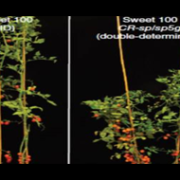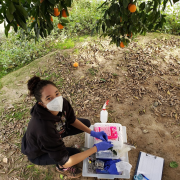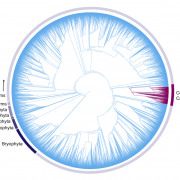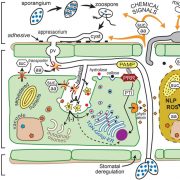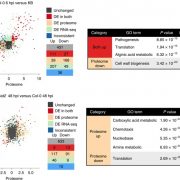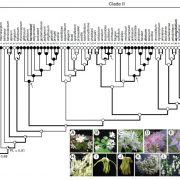Chemical Defenses of Maize Roots
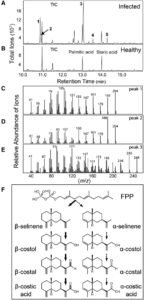 Of the many classes of natural products produced by plants, terpenoids are the most structurally diverse, with well over 25,000 established compounds. In maize (Zea mays), terpene olefins are nearly ubiquitous components of induced volatile emissions following biotic stress. In contrast to our understanding of foliar volatiles, much less is known about the volatile emissions of roots. To better understand belowground defenses in the field, Ding et al. (10.1104/pp.17.00879) performed root metabolomic profiling and uncovered unexpectedly high levels of the sesquiterpene volatile β-selinene and the corresponding nonvolatile antibiotic derivative β-costic acid. The authors identify terpene synthase21 (ZmTps21) as a β-costic acid pathway candidate gene. For biochemical validation, a full-length ZmTps21 was cloned, heterologously expressed in Escherichia coli, and demonstrated to cyclize farnesyl diphosphate, yielding β-selinene as the dominant product. Numerous β-costic acid-deficient inbred lines were found to harbor Zmtps21 pseudogenes lacking conserved motifs required for farnesyl diphosphate cyclase activity. Consistent with microbial defense pathways, ZmTps21 transcripts accumulate strongly following fungal elicitation. Challenged field roots containing functional ZmTps21 alleles displayed β-costic acid levels exceeding those required to inhibit the growth of five different fungal pathogens and rootworm larvae (Diabrotica balteata).
Of the many classes of natural products produced by plants, terpenoids are the most structurally diverse, with well over 25,000 established compounds. In maize (Zea mays), terpene olefins are nearly ubiquitous components of induced volatile emissions following biotic stress. In contrast to our understanding of foliar volatiles, much less is known about the volatile emissions of roots. To better understand belowground defenses in the field, Ding et al. (10.1104/pp.17.00879) performed root metabolomic profiling and uncovered unexpectedly high levels of the sesquiterpene volatile β-selinene and the corresponding nonvolatile antibiotic derivative β-costic acid. The authors identify terpene synthase21 (ZmTps21) as a β-costic acid pathway candidate gene. For biochemical validation, a full-length ZmTps21 was cloned, heterologously expressed in Escherichia coli, and demonstrated to cyclize farnesyl diphosphate, yielding β-selinene as the dominant product. Numerous β-costic acid-deficient inbred lines were found to harbor Zmtps21 pseudogenes lacking conserved motifs required for farnesyl diphosphate cyclase activity. Consistent with microbial defense pathways, ZmTps21 transcripts accumulate strongly following fungal elicitation. Challenged field roots containing functional ZmTps21 alleles displayed β-costic acid levels exceeding those required to inhibit the growth of five different fungal pathogens and rootworm larvae (Diabrotica balteata).


